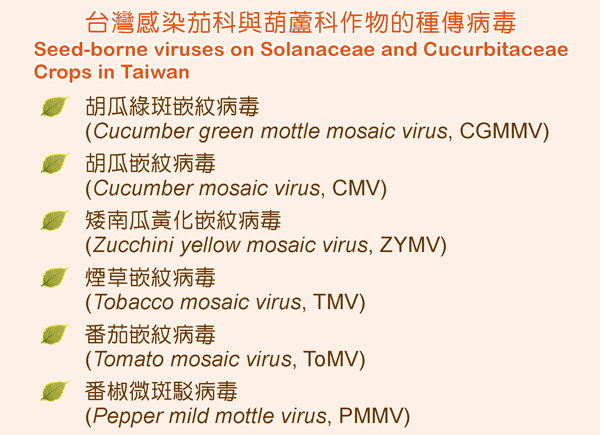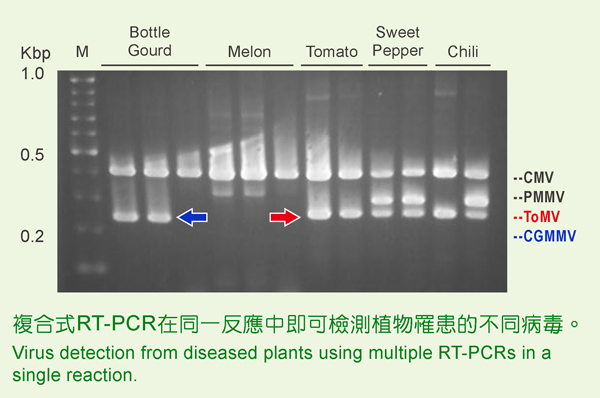A seed-borne viral pathogen can serve as the primary source of inoculum for initiation of a viral disease in a host crop in the field. Under favorable weather conditions, seed-borne diseases often spread further to adjacent plants, causing severe outbreaks in the field and severe losses in crop yield and quality. For example, numerous seed-borne viruses have been recorded as causal agents of disease in solanaceaous and cucurbitaceaous crops in Taiwan. Major seed-borne viruses of Solanaceae include Cucumber mosaic virus (CMV), Tobacco mosaic virus (TMV), Tomato mosaic virus (ToMV) and Pepper mild mottle virus (PMMV), while major seed-borne viruses of Cucurbitaceae include Cucumber green mottle mosaic virus (CGMMV), Cucumber mosaic virus (CMV) and Zucchini yellow mosaic virus (ZYMV). Research efforts at TARI focused on the development of two methods for the detection of seed-borne viruses in solanaceous and cucurbitaceous crops, including a polyclonal antisera method and a multiplex reverse-transcription polymerase chain reaction (RT-PCR) method. Both detection methods have now been applied to detect viral pathogens in infected seeds in agricultural settings.
Detection of Seed-borne Viruses in Solanaceous and Cucurbitaceous Crops
2015-04-24
UPDATE:2015-04-24 16:24:00




